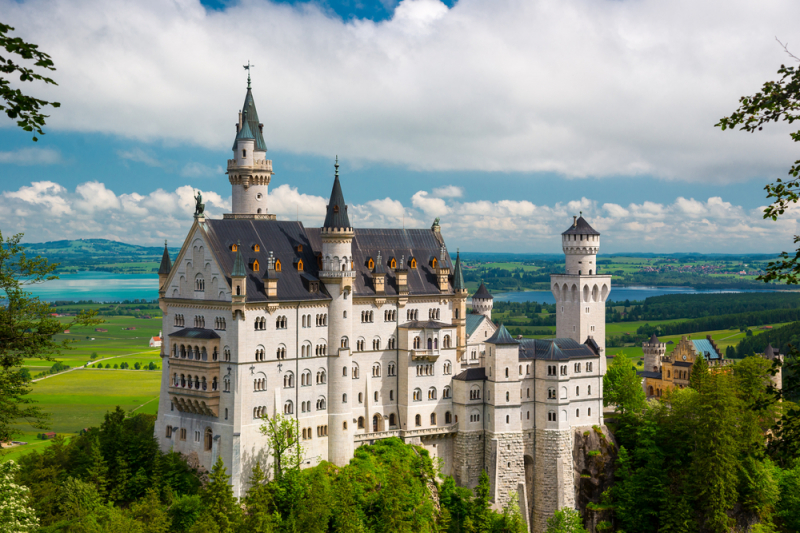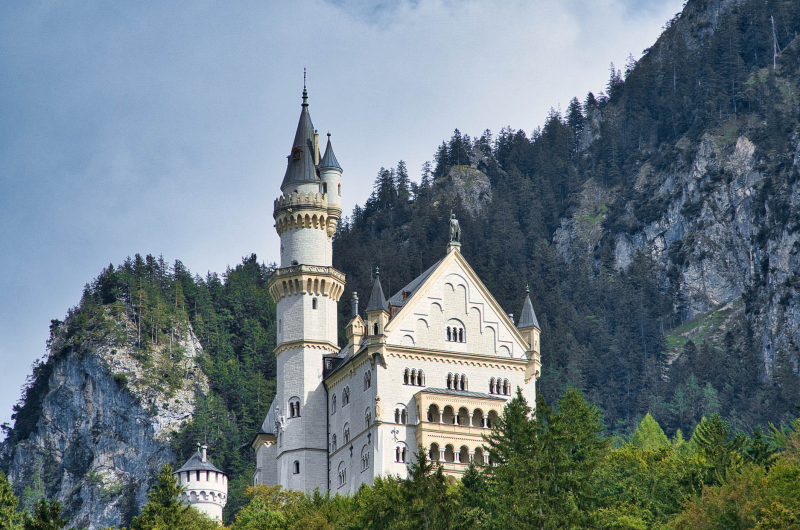Neuschwanstein Castle, Germany
Neuschwanstein Castle is a 19th-century historicist palace in southwest Bavaria, Germany, on a steep hill above the hamlet of Hohenschwangau near Füssen. King Ludwig II of Bavaria commissioned the mansion as a retreat and in honor of Richard Wagner. Rather than using Bavarian public finances, Ludwig preferred to pay for the castle with his personal fortune and substantial borrowing. Construction on the building began in 1869, but was never completed.
Neuschwanstein Castle is made up of numerous structures that were built across a 150-meter span on the edge of a cliff crest. Numerous towers, ornate turrets, gables, balconies, pinnacles, and statues adorn the elongated structure. Most window openings are bi- and triforia, in keeping with the Romanesque architecture. The ensemble of distinct buildings affords various scenic views of the palace from all sides, set against the backdrop of the Tegelberg and the Pöllat Gorge in the south and the Alpine foothills with their lakes in the north. It was created in the image of a romantic knight's castle. Unlike "actual" castles, which are usually the result of centuries of construction, Neuschwanstein was designed from the start to be an intentionally lopsided structure that was built in stages. The uniqueness and creativity in the architecture make this castle one of the most beautiful buildings which like to visit in the world.
The castle was built with the intention of serving as the King's private abode until his death in 1886. Shortly after his death, it was opened to the public. More than 61 million tourists have visited Neuschwanstein Castle since then. More than 1.3 million people visit annually, with as many as 6,000 per day in the summer.
Location: Hohenschwangau, Germany












